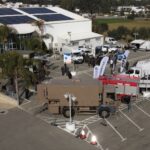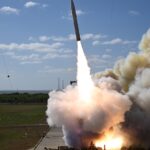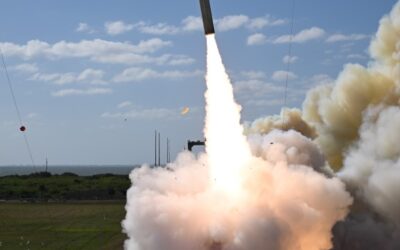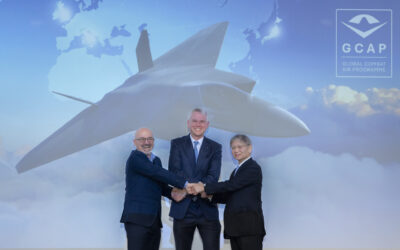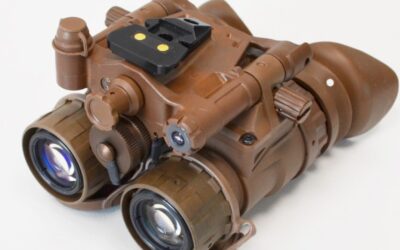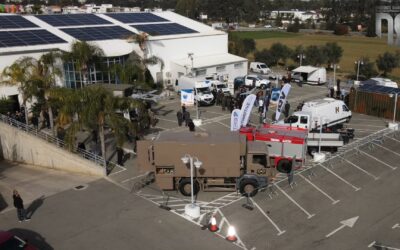The US Army has successfully conducted a test launch of its new hypersonic missile system, “Dark Eagle,” after two years of delays.
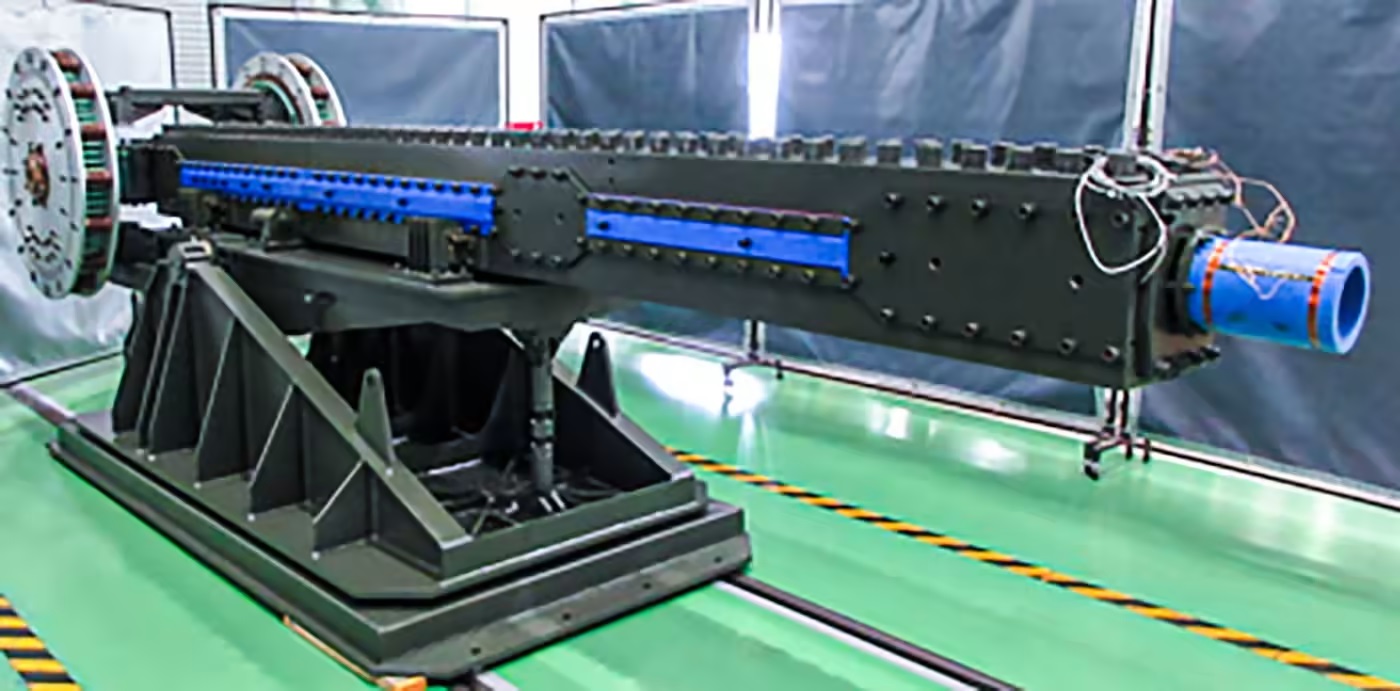
*Andreas Pogiatzi
In fact, Tokyo seeks to partner with Washington to develop a Railgun, which could be used to counter hypersonic weapons.
The prime contractors for the Japanese railgun development program, Japan Steel Works and Mishima, are urging their officials to approach their counterparts in the United States, such as BAE Systems and General Atomics, to consider getting involved in the program.
Electromagnetic guns were first designed in France during World War I. Since then, Germany, China, Russia, India, the USA and recently Turkey (2019), have tried to develop the Railgun without however moving on to serial production and full operational implementation.
The US Navy in particular intended to integrate a Railgun on the 3rd Zumwalt-class destroyer (USS Lyndon B. Johnson – DDG-1002), but ultimately this did not happen. Additionally the USN asked Congress to stop funding for the development of Zumwalt class destroyers, as their cost, -which exceeded by far the initial estimates- amounted to $22.5 billion, that is 4.24 billion, per unit. Initially, the number of Zumwalt-class ships to be built was reduced from 32 to 24, then to 7 and finally to only 3 ships, USS Zumwalt (DDG-1000), USS Michael Monsoor (DDG-1001) and USS Lyndon B. Johnson (DDG-1002).
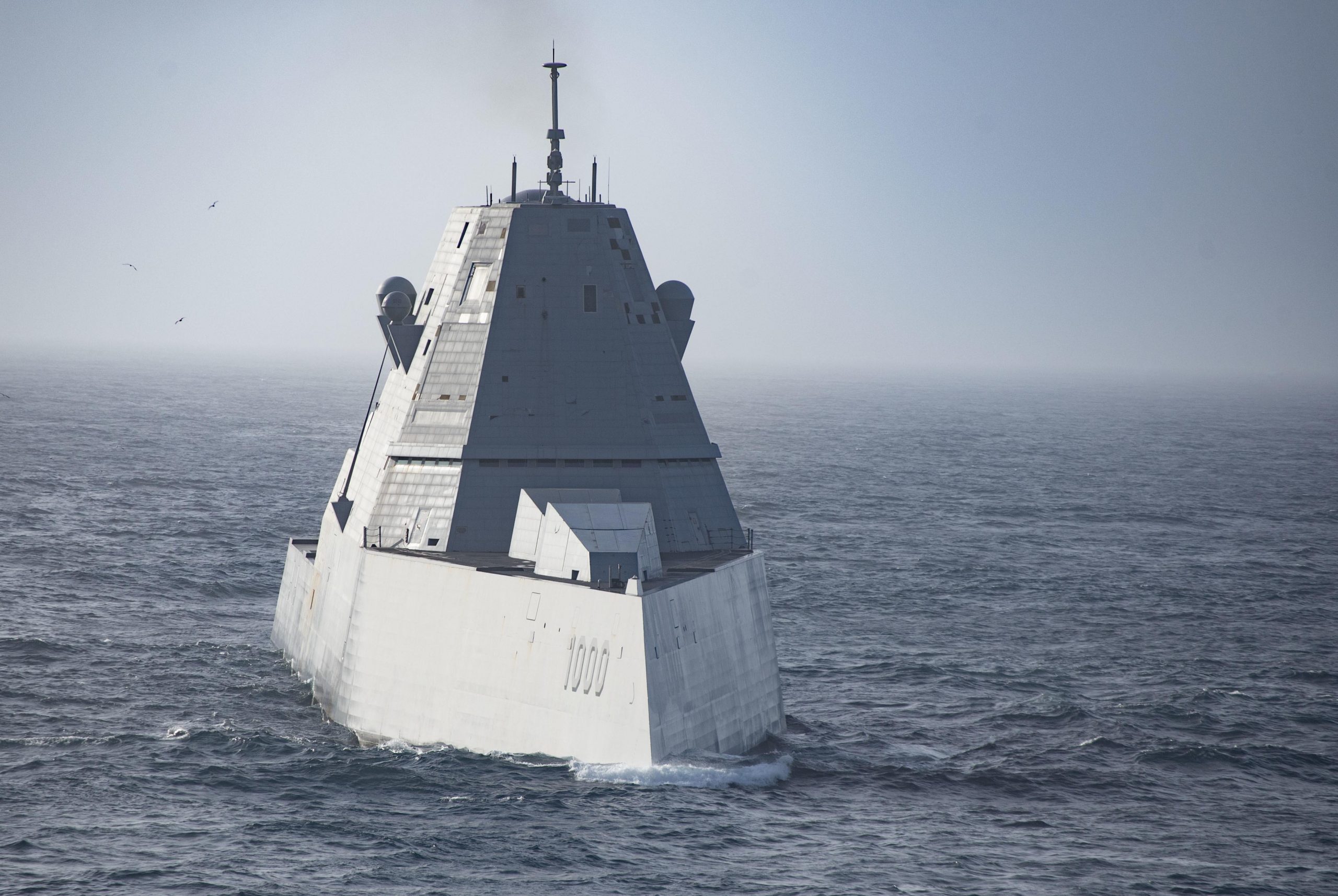
For the record the 3 Zumwalt destroyers feature in addition to the 20 MK 57 VLS vertical missile launchers, two 155mm Advanced Gun Systems (AGS) which use special projectiles. However their usage was deemed unsuitable due to their very high cost ( nearly $1m per projectile) thus the AGS gun will be decommissioned.
Nevertheless, the concept of a railgun is still “alive” for Japan and this made an impression.
The Railgun philosophy and fundamental principles
The weapon’s philosophy is based on launching non-explosive projectiles using electromagnetic energy. The destruction of a target is achieved by the large kinetic energy that the projectile will develop, which amounts to a speed of 2,500 m/s (8,200 f/s) or about Mach 7 at sea level.
The way the Railgun works can be briefly described as follows:
The railgun uses a pair of parallel conductors (rails) along which a sliding projectile is accelerated by the electromagnetic effects of a current that flows down one rail, into the projectile and then back along the other rail. Electrons flow from the negative terminal of the power supply to the negative rail, across the projectile, and down the positive rail, back to the power supply.
The Railgun consists of three parts.
- The power supply unit, i.e. the unit which will give to the gun the required electrical energy. The power unit includes all the power channels, i.e. the cables that carry the electricity to the gun;
- The cannon with two (or more) parallel rails. Rails can range in size from 1 to 9 meters based on today’s data;
- The moving part (projectile) which usually is made of tungsten
According to existing reports and information, a Railgun is estimated to have a useful range against targets at a distance between 10-200 km pending in the projectile’s size and the railgun.
Also read: Hellenic Navy | Dominating the Aegean – VIDEO & Photos
In addition, the hypersonic speed developed by the projectile, combined with its size, makes it undetectable and, therefore, it cannot be intercepted by any technology known to date. The projectiles of a Railgun are inert and their action is based on Isaac Newton’s 2nd law of motion, i.e., in a body of a certain mass (e.g. a projectile) the rate of change of its speed depends on the force that will be exerted on it. More power applied simply means more acceleration.
Based on the kinetic energy of the projectile, when it hits its target, it can penetrate thick armor. During one of the tests by General Atomics, the projectile was able to travel an additional 7 kilometers (4.3 miles) after previously penetrating a 1⁄8-inch (3.2 mm) thick steel plate.
You can watch a relevant video depicting the said launch here.
Pros and cons
The trade-off between size, fuel and payload makes conventional missiles and projectiles cost prohibitive. According to the study by US Navy Admiral David Alan Adams,“Naval Railguns are Revolutionary ”, historically each rocket costs over 1,000 dollars per mile i.e. per 1.6 kilometers.
He, like the pro-railgun school of thought, claims that electromagnetic weapons offer a mature, original, longer-range and cost-effective solution.
However, this view is subject to huge criticism, as each railgun projectile costs from 25 to 50,000 USD. Adding to the negative criticism against Railguns is the argument that its projectiles are not explosive and are therefore limited to engaging stationary targets via hit-to-kill approach.
Another limitation of the Railguns is that the projectiles are unguided, although a GPS guidance package and Inertial Navigation System (INS) was previously under development. Thus, the projectile cannot track moving targets or receive laser guidance.
Furthermore, the damage a Railgun projectile can inflict on a target is likely to be much less when compared to missile systems such as the Long Range Anti-Ship Missile (LRASM) which has a 1,000 lb (about 450 kg) warhead.
The US military focused on developing small guided missiles that could withstand high acceleration (g-force) launches from ultra-high-velocity plasma guns. In 2015, General Atomics claimed to have successfully launched a projectile with an embedded electronic kit. In 2021, the US Department of Defence awarded BAE Systems a $16 million contract to develop and demonstrate the lethality of the Hypervelocity Multi-Role Guided Missile (HVP) against ground targets at extremely long ranges.
Also read: Raytheon | A hypersonic missile takes flight
The projectile was originally intended for Railguns, however it can be incorporated into various conventional guns, such as the 5-inch naval gun and 155mm guns.
Currently, as mentioned above, there are only three ships on which the US Navy has mounted Railguns and these are the three Zumwalt-class destroyers. The next “opportunity” to install Railguns on warships will be at the end of the decade, when the US Navy starts building the DDG(X) destroyers.
Railguns on ground platforms
Driven by the need to penetrate explosive reactive armor (ERA), the US military has made sustained investments in railgun technology for application on ground platforms. This need, however, places limitations on electromagnetic energy technology compared to a Railgun installed on a ship. So, it is risky to use this technology in mobile combat platforms, which will not have powerful power units, since the Railgun requires large amounts of electricity.
For example, a Zumwalt class destroyer has up to 10 times more electrical power than other US Navy destroyers (Arleigh Burke class). Additionally with the advanced Integrated Power Management System (IPS) a Zumwalt can allocate up to 80% of its power (which amounts to 4160 volts) to firing a Railgun which in turn releases up to 5 million amps (5 megawatt- MW) or 1200 volts at a time within 10 milliseconds, power sufficient to accelerate a projectile of about 20 kg to speeds of 0-8000+ km/h.
For a better understanding of the energy required, it is indicative to mention that with 5 MW, up to 5000 houses can be supplied with electricity for one year!
Despite the work accomplished over the years to develop a fully functional and effective Railgun, which would be a cornerstone in the naval field, the US ended the program that began in 2005.
According to Military.com, the funds saved will be transferred to programs to further develop hypersonic missiles and other technologies.
Japan’s interest
Tokyo, according to the Vice President and head of the Technology and Logistics Agency of the Ministry of Defence of Japan, Shigenori Mishima, said that in the past 10 years it has advanced fundamental research on the development of electromagnetic technology and that, together with the US, they can cover the final stretch.
He also claimed that they have made progress on the Railgun’s power storage, but Japan needs help in building guided missiles. “If we can demonstrate the railgun, the United States might change its mind on the technology; It would be a win-win for everybody” he said.
Also read: Hermeus | Full-Funded Quarterhorse with $60 Million US Air Force Partnership – VIDEO
The future
Assuming that the many technical challenges of Railguns are overcome, including issues such as projectile guidance, resistance to extreme temperatures, sustainability and reliability of the electrical power supply, increased weapon launch speeds, then perhaps Railguns can offer advantages over most conventional guns for a variety of offensive and defensive scenarios.
Based on data so far and the progress made, Railguns have limited utility against both surface and air targets.
Also read: OTO VULCANO 127 | Dual-role ammunition against surface and long-range aerial targets
READ MORE
GCAP | Industry Partners Reached a Landmark Agreement to Deliver Next-Gen Combat Aircraft
BAE Systems (UK), Leonardo (Italy), and Japan Aircraft Industrial Enhancement Co Ltd (JAIEC) have reached an agreement to form a new…
Ukraine | Receipt of 1.2 Million Drones in 2024
The Ukrainian Ministry of Defence announced that it had supplied 1.2 million unmanned aerial vehicles to the Ukrainian army in 2024.
USA | The leader of the Islamic State was killed in an airstrike in Syria
The US military announced midday Friday that it had killed ISIS leader Abu Yusuf in an airstrike in Deir ez-Zor province.
THEON INTERNATIONAL | German parliament approves the exercise of the 3rd option of the OCCAR Night Vision contract
Theon International Plc (THEON) announces that the Defence and Budget Committees of the German Parliament approved yesterday a new…
BATTLEFIELD ReDEFiNED 2024 | The premier Defence and Security Conference Successfully Concludes in Cyprus – Photos
The International Defence and Security Conference “BATTLEFIELD ReDEFiNED 2024” was successfully concluded on Friday, 13, December 2024…
Dark Eagle | Successful Test of Hypersonic Missile by the US Army
The US Army has successfully conducted a test launch of its new hypersonic missile system, “Dark Eagle,” after two years of delays.
GCAP | Industry Partners Reached a Landmark Agreement to Deliver Next-Gen Combat Aircraft
BAE Systems (UK), Leonardo (Italy), and Japan Aircraft Industrial Enhancement Co Ltd (JAIEC) have reached an agreement to form a new…
Completion of the French-Hellenic Defence Innovation Symposium
On 12 and 13 December, 2024, the Hellenic Centre of Defence Innovation (HCDI) organised the first French-Hellenic Defence Innovation…










